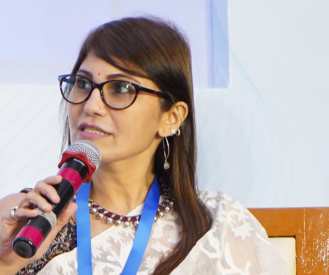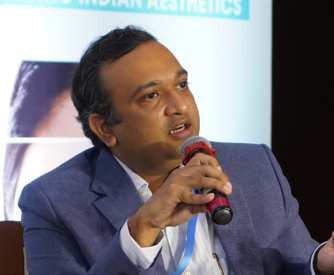Body Fillers: Is it there to stay?
AMI takes a sneak peek into the world of body fillers, unveiling their remarkable capabilities to our esteemed aesthetic medicine practitioners.
In the realm of aesthetic medicine, body fillers have long thrived in the international market, while their presence remained discreet in India. The products and their transformative potential have been a well-kept secret, known only to a select few. However, a new era of accessibility and awareness is upon us.
The scope of body fillers
Dr Anuya Manerkar, Consultant Dermatologist, Panache, sheds light on the trajectory of body fillers in the market, highlighting their popularity abroad since 2010. She recalls the initial availability of the non-hyaluronic acid (HA) product Macrolane in 2001, which despite its widespread use, posed certain challenges. “The emergence of HA-based fillers in 2010, particularly NASHA, gained immense favour among doctors due to its safety profile. Among the pioneers in this realm was the German company Bioscience, which introduced Hyacorp. However, in India, their certifications were not yet in place. A significant development in 2016 was the introduction of Genefill, launched in India in 2017. While initially used for breast augmentation, its distinct behaviour in comparison to other areas led to discontinuing its use in breasts. Issues of radio-opacity further contributed to this decision.” Presently, Genefill holds certification and finds application in the buttocks, calves, and dorsum of the hands, and for addressing surface irregularities like those on the anterior abdominal wall or post-surgery adjustments. In such cases, a minimal amount of the product is utilised, ensuring safety remains paramount.

Why body fillers?
Dr Saumil Shah, Consultant Plastic, Aesthetic &
Reconstructive Surgeon,
highlights that some patients prefer non-surgical options and specifically request body fillers. He categorises these patients into two groups – first, his post-op patients or individuals who underwent fat grafting by
another surgeon but did not achieve the desired results, making body fillers a viable option. Second, patients who underwent liposuction and have irregularities or fibrosis in specific areas can also benefit from body fillers. However, Dr Shah suggests surgical procedures for patients seeking overall volume enhancement due to the long-term benefits and cost-effectiveness associated with surgery.

On her part, Dr Manerkar emphasises that while body fillers can augment volume to a certain extent, they might not be suitable for patients with complete deflation. In such cases, she suggests a comprehensive approach, involving toning up and gaining muscle strength, consulting a surgeon for possible implants, and then considering body fillers to complement the treatment.
The right candidate for fillers
Dr Manerkar suggests that the ideal candidate for body fillers should be young and healthy, typically not beyond 65-years-old, to avoid the risk of muscle tone loss due to excessive dosages. Additionally, obese individuals are not suitable candidates, as they already have a surplus of volume to shed. The right candidates for fillers are reasonably slim individuals experiencing specific volume loss in areas such as the buttocks, calves, or dorsum of the hand. For instance, those with deflation in the buttock area, thin calves, or flat and wide calves that require projection for a more rounded and slimmer appearance are suitable candidates for body fillers.
Dr Shah identifies three categories of patients unsuitable for fillers: those with unrealistic aesthetic expectations, overweight patients, and individuals who have undergone surgeries within the past six months. The fibrosis that occurs after recent surgery can lead to changes in anatomy, blood vessel location, and the risk of undesirable outcomes. For immediate results, some patients might be eager to undergo filler treatments, but caution is essential in such cases.
Filler vs. fat grafting
Comparing the usage of body fillers and fat grafting, Dr Shah explains that for specific areas like the dorsum of the hand, only a small amount of fat, around 10 to 20 cc, is needed. For patients undergoing liposuction, fat grafting can be a feasible option at minimal extra cost since the excess fat would otherwise be discarded. Fillers are an excellent choice for patients seeking a non-surgical option with no downtime, especially when they prefer immediate results.
He notes that patient awareness regarding the use of fillers for the dorsum of the hands is higher compared to fat grafting. When patients have a preconceived notion of opting for fillers, it might be challenging to persuade them to consider fat grafting. Thus, Dr Shah educates patients about both options and allows them to make their own choice.
Body fillers for cellulite
According to Dr Manerkar, body fillers can effectively camouflage cellulite, but they are not suitable for heavy patients with extensive cellulite pockets. The right candidates for this treatment are slimmer individuals with mild sagging and some cellulite, commonly found in women in their 40s. The results of the treatment typically last for one and a half to two years.
Complications during and post-procedure
Dr Shah discusses common complications associated with body fillers, including pain, swelling, and bruising. To minimise discomfort during the procedure, he uses larger cannulas, like 17-18 gauge, and administers a small local anesthetic at the entry point, ensuring that the movement of the cannula within the fat is painless. He highlights the importance of avoiding excessive needle pricks for the comfort of the patient.
Dr Manerkar shares her approach, preferring to use an 18-gauge needle and cannula without making an incision. She gently moves the needle in circular and horizontal motions to facilitate smooth cannula movement. Before proceeding with the procedure, she marks entry points and injects local anesthesia with lidocaine and adrenaline for infiltration.
Long-term complications and considerations
Dr Shah notes that the areas where major complications may occur are related to two factors. Firstly, when large volumes of fillers are used in unindicated areas, such as the buttocks, granulomas are commonly reported complications. Secondly, migration of fillers can happen if patients apply pressure before the filler integrates properly. It is vital to inform patients about the need for proper aftercare to avoid migration issues.
Dr Manerkar stresses the importance of considering patients’ lifestyles during the consultation. Patients with varied workout routines may experience different results and durations with fillers. She points out the use of HA fillers for the body with a higher G prime and larger molecular size, providing the desired inflation. The mixture of uncrosslinked and crosslinked HA in a biphasic product contributes to increased longevity.
Training and skilling
Dr Manerkar emphasises the criticality of having a thorough understanding of anatomy when working with fillers, as every filler procedure carries risks of intravascular occlusion or compression. The risks involved can range from blindness for facial procedures to potentially life-threatening situations for body fillers.
Dr Shah adds that even among plastic surgeons and practitioners of aesthetic plastic surgeries, buttock contouring is considered challenging due to the need for patient satisfaction and understanding various aesthetic anatomies. Each area that receives filler injections requires dedicated attention and should not be taken lightly. The importance of safety and patient satisfaction cannot be overstated in these procedures.
Both doctors stress the significance of proper education and training in anatomy for injectors. Understanding danger zones and avoiding complications is crucial to ensure positive outcomes. As this field evolves, there may be a need for specialised injectors who focus on body fillers. A well-designed syllabus and comprehensive training can equip practitioners to perform these procedures effectively and safely
(The above insights were gathered from a panel discussion at the recently concluded Aesthetic Medicine Conference in Mumbai. This session was moderated by Dr Soma Sarkar, Dermatologist & Aesthetic Physician, Dr Soma’s Aesthetic Clinic & Academy.)